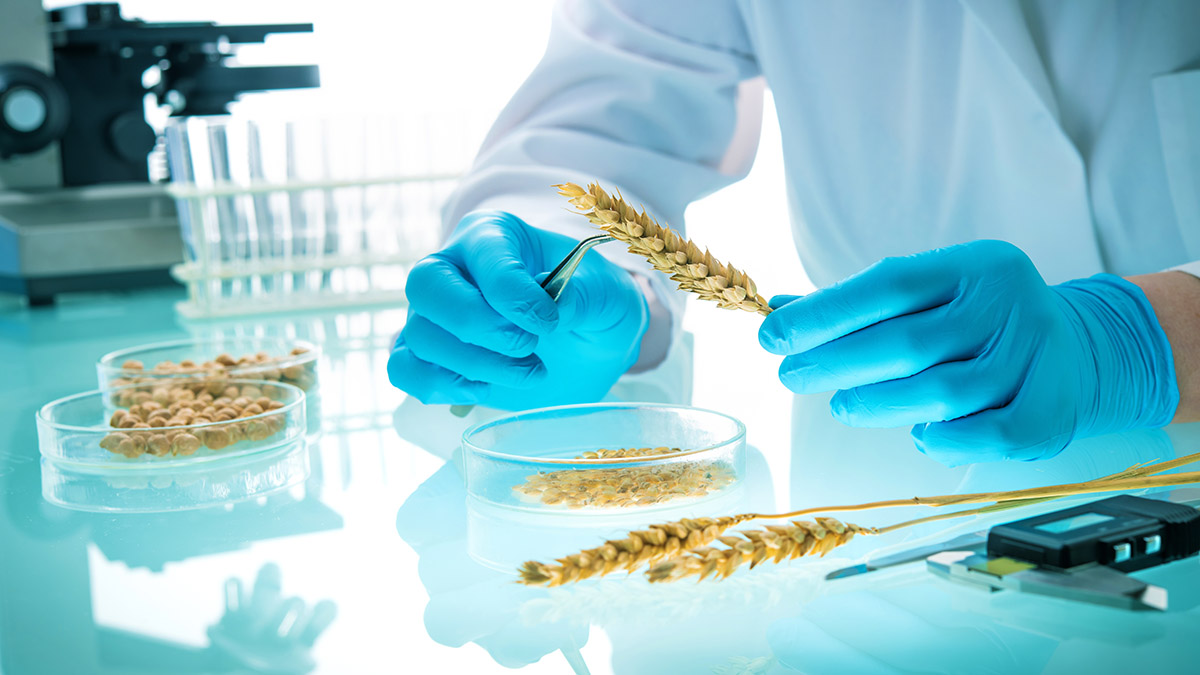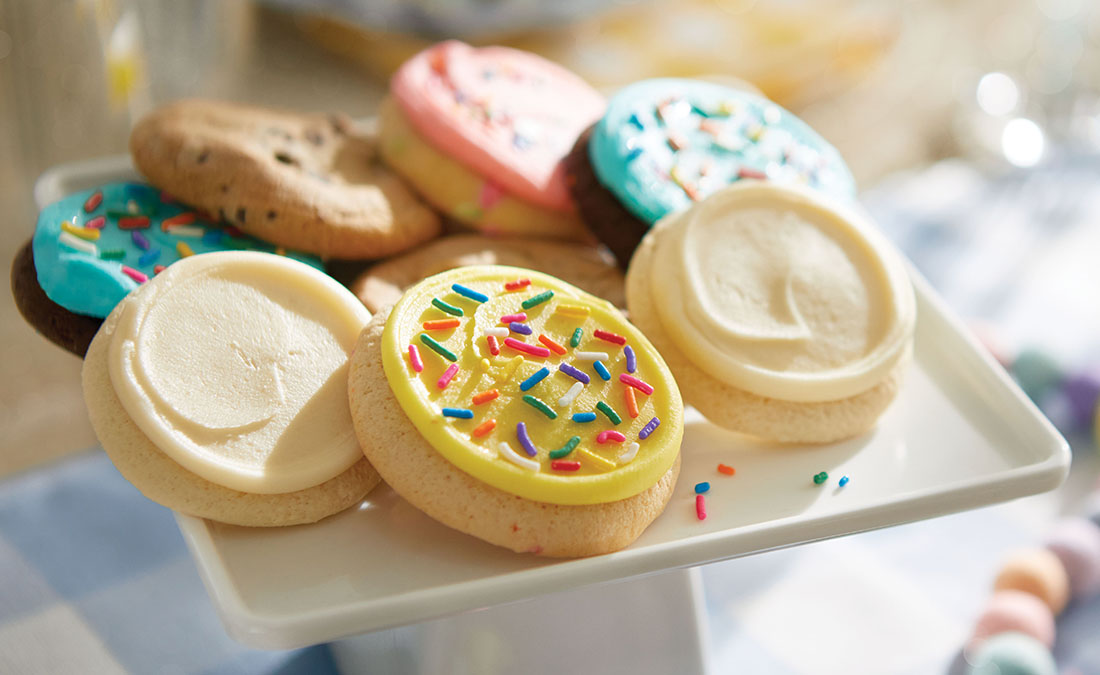How Cheryl's Uses Food Engineering to Make a Longer-Lasting Cookie
It's all about extending the shelf life of those delicious baked goods.
Feb 22, 2022
Baking the perfect, chewy chocolate chip cookie is as much an art as it is a science. But while you might use the same ingredients in your kitchen as the ones you'll find on the back of a Cheryl's Cookies wrapper, there is one big difference: You have the luxury of being able to eat the cookies you bake right out of the oven, whereas Cheryl's has to package and ship its treats to their destination — and that takes time. And when you don't use preservatives, time is not your friend.
That's where food science comes in. People in this field apply their training in chemistry, biology, and physics to help produce the kind of baked goods that transport well (and transport you back to your childhood in one bite!) — and at Cheryl's, they do it without any chemicals.
Creating soft, flavorful, and delicate treats that can withstand the unpredictability of delivery, as well as the passage of time without sacrificing taste or texture, requires loads of experience and know-how. Good thing Cheryl's has a couple of experts on the case in Brenda Mortensen, food product development director and food scientist, and Jacquelyn Blanchard, food product development scientist and food engineer.
Why does Cheryl's not use food preservatives?
The very first cookie Cheryl's made in 1981 — a chewy chocolate chip cookie — used ingredients found in most pantries: wheat flour, unsalted butter, chocolate chips, and brown sugar. The recipe has changed little since then, but with the rate at which the company has grown, the challenge now is replicating it many times over with the same high-quality ingredients while maintaining, and even extending, freshness.

So it is up to Mortensen and her team — which consists of herself, Blanchard, and Product Development Supervisor Dana Haught — to come up with inventive solutions for prolonging shelf life through only natural means.
Some man-made compounds, such as gums, thickeners, and other preservatives, may make food stay fresh longer, but they can come at a cost. Animal studies suggest that regularly consuming these chemicals can cause gastrointestinal issues (think gas, bloating, and indigestion). Some common food preservatives found in ultra-processed foods, including the compounds BHA and BHT, may increase the risk of cancer if consumed in large quantities. These man-made additives are commonly found in packaged foods like chips, cookies and other baked goods, and cereal.
Food science vs. food engineering

Though related, the disciplines of food science and food engineering have some key differences. Food scientists like Mortensen study the building blocks of food. “I take a close look at every ingredient in every cookie, down to the level of microbiology and chemistry, to make sure our products are not just delicious but safe to eat and travel ready," Mortensen says.
One of Blanchard's duties is to take a high-level view of cookie production at Cheryl's, which is based in Westerville, Ohio. As she puts it, “Food engineering is about our large-scale operations. Using our knowledge of food science, we apply chemical and mechanical engineering to optimize food production at a high volume to efficiently produce the best possible product on a consistent basis."
In layman's terms, the food science and engineering teams are responsible for making sure the small-batch bakery cookies on which Cheryl's was built more than four decades ago can be produced on a large scale and with the same quality every time.
Food science at Cheryl's
Mortensen and her team continually tweak their recipes to try and preserve, and even prolong, freshness while maintaining the chewy, soft texture that is the trademark of a Cheryl's cookie.
Their latest innovation? Incorporating a natural wheat fiber into their cookies. Wheat fiber is made up of cellulose, a molecule found in the cell walls of plants that forms strong hydrogen bonds with water, giving it a sponge-like absorbency.
“Wheat fiber is excellent at holding on to moisture," Mortensen says. "Baked goods start to go stale when they lose water and dry out, so this one ingredient addition can help extend the shelf life of our cookies in the freezer — by several months."

Of course, it's not just a matter of adding a sprinkle of wheat fiber to every batch of dough in the kitchen. Finding the exact amount that will not compromise the flavor and texture of the cookies is a highly scientific endeavor that requires the "brave" sacrifice of regular taste testing.
The food science team takes it upon themselves to try fresh-baked cookies made with varying amounts of fiber, and then sample the cookies after six, seven, eight months of storage, and longer. At every stage, the scientists compare the stored cookie to the freshly baked one in terms of texture, flavor, aroma, and overall eating experience.
So far, Mortensen says, the food science team has modified the recipes for chocolate chip, oatmeal raisin, sugar cookie, and cut-outs so that they stay fresh in the freezer for up to 10 months — four months longer than before.
What about the frosting?

Many of the cookies Cheryl's makes are topped with buttercream frosting. That begs the question: How does the frosting keep from drying out?
The answer, once again, is that amazing wheat fiber — and some high-quality H2O.
Mortensen explains: “Water moves within food to reach equilibrium, so when we extend the shelf life of the cookie by maintaining moisture levels, it actually helps keep the frosting fresh as well. The moisture will move between the cookie and the frosting, depending on which product is drying out more, to maintain an overall optimal eating experience."
The future of food science at Cheryl's
The next area of focus for Mortensen and her team are brownies and cakes, two treats that present entirely different shelf life issues. Whereas cookies dry out, brownies tend to become too moist, and cakes start to taste off when exposed to oxygen. To keep these treats fresh as long as possible, the food science team hopes that a natural antioxidant, a form of vitamin E, can delay the oxidation that makes nuts and flour go rancid.
Whatever the solution is, you can bet they won't stop until they find it.
Mortensen says, "Thanks to our food scientists and engineers, you can expect the same exceptional quality every time a box of Cheryl's cookies arrives at your doorstep."







